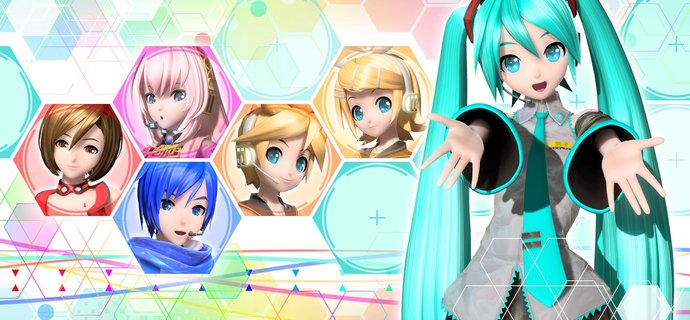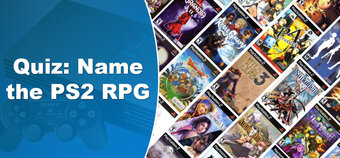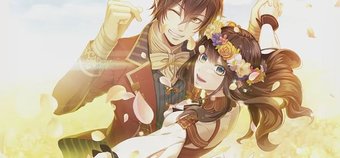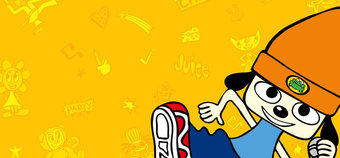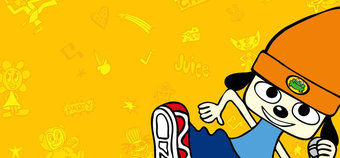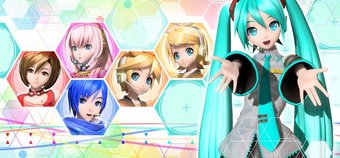She may not be anywhere near Sonic the Hedgehog in terms of recognisability, but Hatsune Miku, the green-haired virtual singer, is becoming a bit of a SEGA stalwart lately. Prior to 2013's Project Diva F for the PS3/PS Vita, she was pretty much unheard of in the West, but annual button mashing music game instalments have seen her go from strength to strength in much of the English-speaking world - at least, relatively speaking, as the series is still a bit of an acquired taste, and a bit of a niche title. After all, not everyone can appreciate a singer that's essentially a glorified synthesiser, and not everyone gets quite as excited over an extensive virtual wardrobe as we do.

#stylish #nofilter #suchwow #futuristicspacenurse
But let's backtrack a little first. If this is your first Miku rodeo, the Project Diva games are essentially Guitar Hero/Rock Band style button mashing music titles, that star a number of Japanese 'vocaloid' singers. Essentially digitally synthesised voices that can be used to sing all manner of fan-made songs, Miku and co have ended up with one of the largest libraries of music ever, and so a uniquely Japanese phenomenon was born, with popular vocaloids holding sell out concerts, appearing as various racing and festival mascots, and even getting their own manga comic book series too - not to mention their own musical video games. Rounding up a selection of favourite vocaloid tunes, adding a sprinkling of character customisation, and repackaging them as an addictive rhythm action game has proved surprisingly lucrative in both Japan and the West, with their latest foray Project Diva: Future Tone boasting the most extensive track list ever, with over 200 tracks to choose from.
In terms of pure gameplay, then, the Project Diva games are easy to pick up and play. Once you've chosen a track, it's a simple matter of pressing the right button in time with the music and the various icons that fly across the screen. As arrows and icons representing the circle, square, triangle and X buttons, as well as the various directions on the d-pad fly across the screen towards their matching outlines, when the two overlap, it's up to you to hit the button. The better your timing, the more points you'll earn - and the more points you earn, the better your final ranking for the song will be.
And as the saying goes, points mean prizes! The points you earn will net you 'VP', the game's currency (don't ask us what it stands for… Vocaloid Points perhaps?), which can be exchanged for a huge array of outfits, accessories and alternate characters. From cat outfits and bikinis, to Santa outfits and kimonos, all of which can be topped off with gag glasses, wings, a mini top hat and more, there's oodles of things to unlock along the way to make your songs that little bit different. Try putting a giant Miku head on male vocaloid Kaito for example, perhaps to top off his swimming trunks outfit, and you'll be hard pushed to play a serious song without bursting into laughter.

Each song has a recommended outfit set, should you have no imagination.
However, Hatsune Miku: Project Diva Future Tone to give its full title, is a little bit different from your average Project Diva game, being based on an arcade game from Japan. The Playstation 4 version itself is actually more of a game of two halves - or at least two track lists - called Colourful Tone and Future Sound respectively. Perhaps unusually, it's actually being sold in two chunks, too, so you can buy either one or the other, or both should you want the full 220 songs. Future Sound contains a lot of old favourites from the previous Vita games, such as Weekender Girl, Melt and Cat Food, while Colourful Tone concentrates on more of the arcade game exclusives, with a few 3DS Project Mirai tunes thrown in for good measure, such as the seriously catchy Clover Club. Buying both will also give you an extra customisation option for outfits, letting you mix and match hairstyles individually, rather than having to go with whichever one your chosen outfit dictates.
The main rhythm action game has also had a bit of a make-over too, now adding multi-button presses and held notes for bonus points. The former requires you to hit two or more buttons together, similar to chords on Guitar Hero/Rock Band - perhaps a circle and up arrow at the same time, or if it's feeling particularly mean, a whole group of four face buttons at once. It means the game has a bit of a learning curve at first, but after a while you'll be hitting the new multi-note 'chords' with relative ease. At other times, notes with the word 'Hold' below them will creep up on you - and in a kind of Ronseal manner, that's your signal to keep the button pressed down in order to rack up bonus points in the background, at the same time as hitting other notes - but unlike the aforementioned 'chords', they're entirely optional, and it won't count as a miss if you don't keep a button held.
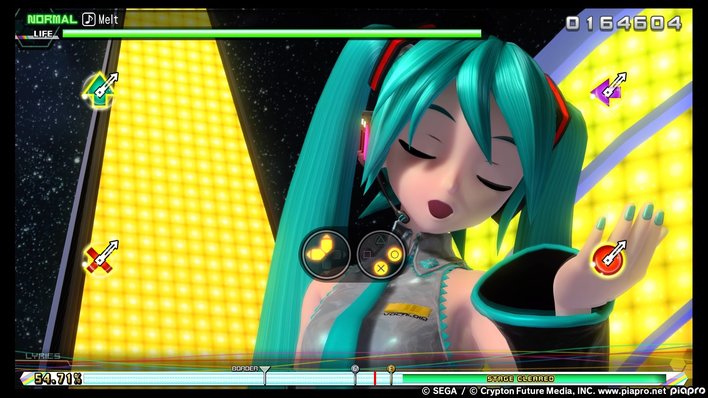
Initially daunting, you'll find you soon get the hang of the multi-button press icons - until you crank the difficulty up to hard and extreme, anyway...
In amongst the 200 tunes and umpteen outfits, there's a few Sega fan favourites too - an Ulala outfit for Miku for example, a version of OutRun's Magical Sound Shower with vocals to play along to, and matching Valkyria Chronicles uniforms for Rin and Len, to name but a few. Other notable songs include the After Burner theme, Miku's rendition of Nyan Cat and recent Just Dance addition, Po Pi Po, alongside a full version of the traditional Project Diva tutorial song, Ievan Polkka. Those who've kept up with the Project Diva games in the past may find there's an awful lot of reused tunes - as a quick estimate, we reckon there's about 80 or so that have appeared before, many of which we're quite happy to play again (Cantarella, for example) and others… not so much (we're looking at you Sadistic Music Factory and Rin-chan Now!).
Speaking of songs, if you're looking to play every single song on offer, you'll need to be able to play on Hard difficulty at least, as not all songs are available on every difficulty level. There's under 150 available on easy, and 216 on normal, with only hard and above (Extreme and the new Extra Extreme) having the full compliment of 224 tracks. Future Tone isn't particularly logical about deciding which songs fit where, either, with a number of songs skipping straight from easy to hard with no normal difficulty in between - an especially peculiar case being the track Packaged from the PS3/Vita edition of Project Diva f 2nd, which definitely used to have a normal difficulty back then. It's not the only example either, as Miracle Paint, from the same game, is also lacking the easy level it previously had. A number of songs also have different titles too, which can make finding a favourite track a bit tricky, whether it's Karakuri Pierrot/Clockwork Clown or Torinokocity/Urbandonment.
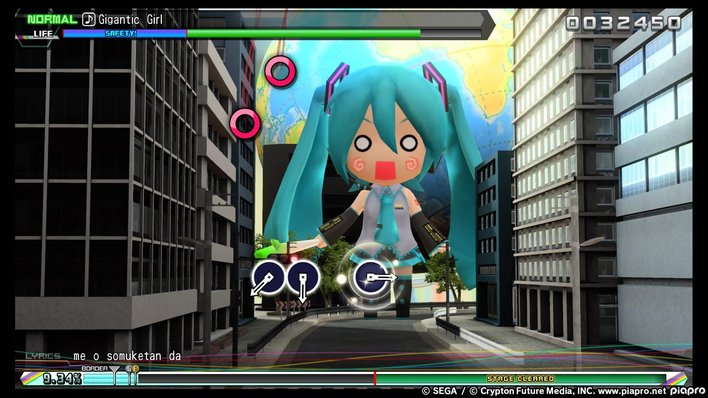
The face you make when realise there's an unlockable extra extreme difficulty...
But perhaps the biggest issue with Project Diva Future Tone is that there's not really much in the way of progression. Past games have given you specific challenges to complete to unlock outfits, or tried to tie things together into a story mode of sorts. but here everything is available right from the start, so long as you've earnt the VP points to buy it. There's no Diva Room to decorate, or light 'life sim' gift giving and bonding with the Vocaloids either (which we've admittedly just dismissed as pointless fluff in the past) - instead, this is a rather no frills package, with "just" a whopping track list to work your way through - and even knowing where to start is more than a little bit daunting. As you complete songs, you'll level up either your Future Sound or Colourful Tone ranks, depending on which song you picked, but again, the ranks seem to serve no real purpose either. Trophy hunters may find them a little uninspired too, with most simply awarded for playing normally and hitting basic milestones, like customising a character for the first time, clearing a certain number of songs or earning 3939 VP (which you'll likely manage in your first few songs).
That being said, the game is still as much fun as ever, and it's way too easy to say 'just one more' and then realise its 3AM. We still have a weakness for mixing and matching crazy outfits, and playing songs with the most inappropriate attire we can muster too, and with oodles of songs and accessories to choose from, we certainly have our work cut out for us. With less of the Diva room fluff, Future Tone may appeal to those who prefer a purely rhythm action-orientated experience - and with more than 200 songs, it certainly delivers in that respect. However, aside from chasing better rankings, there's not really any incentive to go back to some songs once you've played them once. We're also a bit miffed that our favourite moustache accessory has disappeared!
Format Reviewed: Playstation 4

